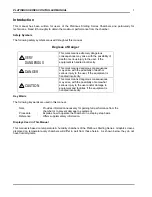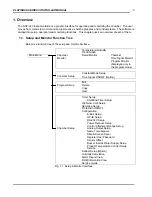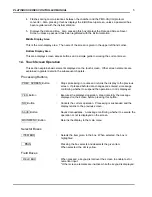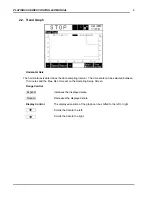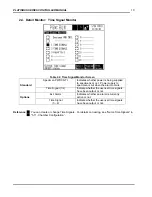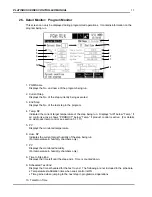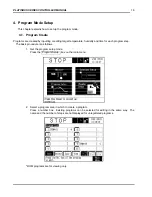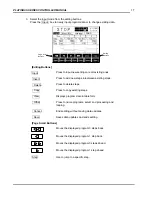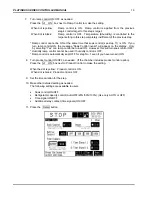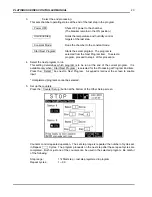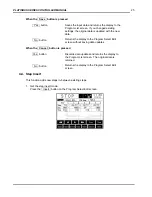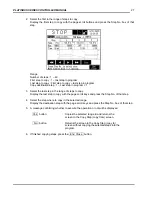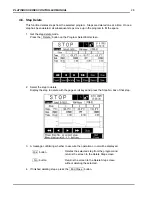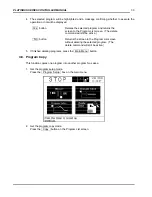
PLATINOUS SERIES CONTROLLER MANUAL
15
Reference
You can name time signals. For details on naming, see “Name Time Signals” in “5.11. Chamber
Configuration”.
3.3. Product Temp. Control (Option) Detail
1.
Press the P.T.C. Detail button at the bottom of screen to get the product temp. control detail
screen. The P.T.C. Detail button will not be enabled if your chamber does not have the
product temp. control option.
This screen is for setting the plus and minus deviation limits. The deviation limits are the allowable
air temperature deviation from product temperature set point under product temperature control
mode. The "plus" value will be added to the product temperature set point to create the "upper" air
temperature limit. The "minus" value will be subtracted from the product temperature set point to
create the "lower" air temperature limit.
When the product temp. process value is far away from the product temp. set point, the controller
will “drive” the air temperature set point to this maximum upper (or lower) deviation limit. As the
product temp. process value gets closer to the product temp. set point, the air temp set point will
change so that it is less than the maximum upper (or lower) deviation limit.
2.
Press the number box next to Max or Min deviation to input the deviation limit values. A
keypad will be overlayed on the screen to enable numeric input.
How to determine the upper and lower deviation limits
If the user is unsure of what value to set for the upper and lower deviation limits, they can use the
following procedure for help in determining the proper temperature offset. (Note: This method
requires the user to have some way of measuring both product and air temperature process
values, such as a recorder or a temperature meter.)
1. Run the chamber with the selected test product to the desired product temp. set point
with product temperature control turned OFF. Run this “test” in constant mode.
2. When the air temperature has reached the desired set point, record the temperature
difference between the product and the air temperature.
3. Use this temperature difference as the deviation limit setting. Enter the value into the
“+” setting for product heat up. Enter the value into the “-“ setting for product cool
down.
4. Execute this procedure for heat up and cooling cycles in order to determine the upper
(“+”) and lower (“-“) deviation limits.
Содержание SCP-220
Страница 1: ...SCP 220 CONTROLLER INSTRUCTION MANUAL...
Страница 2: ......
Страница 38: ...PLATINOUS SERIES CONTROLLER MANUAL 34...
Страница 69: ...PLATINOUS SERIES CONTROLLER MANUAL 65...
Страница 79: ...PLATINOUS SERIES CONTROLLER MANUAL 75...

